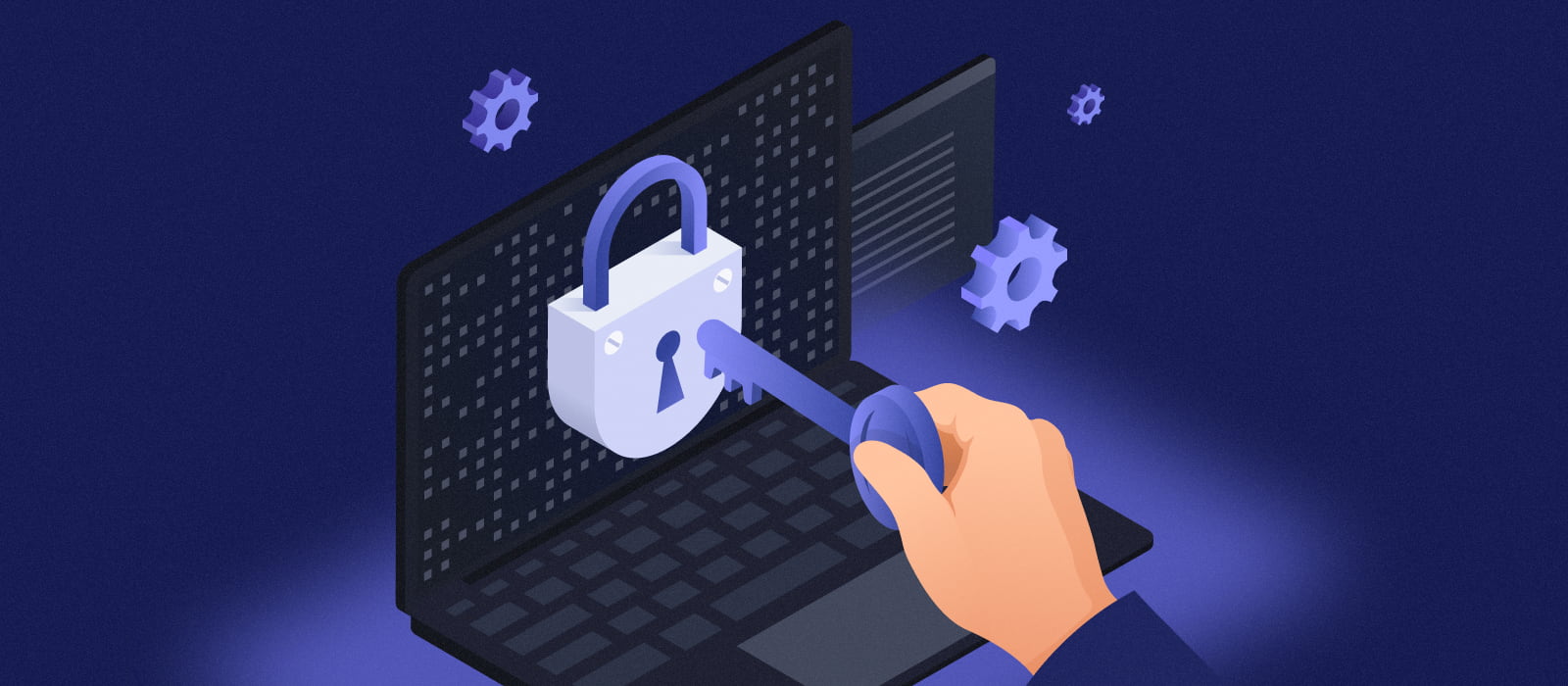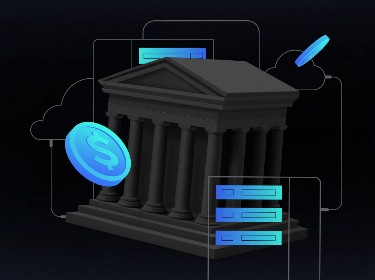Data is the new gold of our digital age, but with great power comes great responsibility. How can companies ensure their data treasures are safe from prying eyes, especially in platforms like Snowflake and Redshift?
Unchecked data access is not just a potential security loophole — it’s a ticking time bomb. As businesses increasingly rely on platforms like Snowflake and Redshift, understanding and implementing robust security measures becomes paramount.
Role-based access control (RBAC) emerges as a game-changer in the realm of data security, safeguarding sensitive data, and ensuring the integrity of business operations.
This article will shed light on the importance of RBAC in Snowflake and Redshift, providing valuable insights into developing a robust role-based access control strategy.
Need assistance with navigating through the complex world of data analytics? Unlock the potential of your data with PixelPlex's data analytics services
What is role-based access control (RBAC)?
Role-based access control, commonly referred to as RBAC, is a security protocol that manages users’ access to resources based on their role within an organization.
Instead of assigning permissions directly to individual users, RBAC centralizes permissions around roles. Each role is associated with a specific set of permissions, simplifying user management and minimizing the risk of accidental or intentional data mishandling.
The primary function of RBAC is to simplify the access management process, ensuring that users have the appropriate access rights — no more, no less — based on their job function. This not only enhances security but also streamlines administrative tasks and ensures compliance with regulatory mandates.
How does role-based access control work?
To illustrate how RBAC works, let’s look at a simple example. In a company, there might be roles like Employee, Manager, and IT Admin. The Employee role may have permissions to view and edit their personal data, the Manager role may have additional permissions to view team performance metrics, and the IT Admin role may have permissions to manage user accounts and maintain the company’s IT infrastructure.
When a new manager is hired, instead of individually assigning permissions, HR simply assigns the Manager role to the new hire, ensuring they have all the access they need.
The mechanics of role-based access control
![]()
RBAC is a structured approach to access control, and its mechanics can be broken down into a few key components: roles, permissions, users, and the principle of least privilege.
Roles
In the context of role-based access control, a role is essentially a collection of permissions. Instead of granting permissions to every individual user, they are bundled into roles.
For instance, a role might be “Database Administrator” or “HR Manager.” Each of these roles would have a specific set of permissions associated with it, tailored to the needs and responsibilities of that role.
Permissions
Permissions define the actions a user can or cannot perform on a particular resource. For example, a permission might allow a user to view a document but not edit it. In RBAC, permissions are not assigned directly to users; instead, they are allocated to roles.
Users
Users are individuals who need access to resources. In an RBAC system, users are assigned to one or more roles, and they inherit the permissions of those roles. This means that if a user is assigned to the “Database Administrator” role, they inherit all the permissions associated with that role.
Principle of least privilege
This is a foundational concept in role-based access and security in general. The principle of least privilege dictates that users should be granted only the permissions they need to perform their job functions and nothing more.
This minimizes the potential damage that can be done if a user’s account is compromised, as the attacker would only have access to the permissions of that specific role.
The importance of RBAC in Snowflake and Redshift
Snowflake and Redshift are industry leaders in data warehousing and analytics, offering unparalleled scalability, performance, and flexibility. However, as with all powerful tools, they come with their own set of vulnerabilities.
Let’s look at the challenges these platforms can face and the critical role RBAC plays in addressing them.
The vulnerabilities of Snowflake and Redshift
- Complex architectures: Both Snowflake and Redshift have intricate architectures designed to handle vast amounts of data and complex queries. While this complexity offers flexibility and power, it also introduces potential points of failure or misconfiguration that can be exploited.
- High-value targets: Given the nature of the data stored — often sensitive, proprietary, or holding significant business value — these platforms are prime targets for cybercriminals. A successful breach can yield a goldmine of information, making them especially attractive for sophisticated attacks.
- Multi-tenant environments: Both platforms operate in multi-tenant environments, where resources are shared among multiple users or organizations. While this optimizes resource utilization, it can also introduce risks if strict isolation between tenants isn’t maintained.
- Integration points: Snowflake and Redshift often integrate with various other tools and platforms, from ETL processes to BI solutions. Each integration point can potentially be a vector for attacks if not properly secured.
Explore the most popular web3 hacks and prevention tips in our detailed guide
How role-based access control acts as a protective layer
Role-based access control serves as a formidable defense mechanism against the vulnerabilities inherent in platforms like Snowflake and Redshift.
By defining roles and permissions, RBAC ensures that only authorized individuals can access sensitive data or critical system functionalities. This reduces the risk of accidental data exposure or deliberate breaches.
However, threats do not always originate externally. At times, a disgruntled employee or an insider with malicious intent can pose significant risks. RBAC enforces the principle of least privilege, ensuring that insiders have access only to the data and functionalities they need, thereby limiting the potential damage they can cause.
Auditing also becomes more straightforward with role-based access control. Organizations can quickly review who has access to what, making it easier to identify potential vulnerabilities and ensure compliance with regulatory standards.
Ultimately, as threats evolve, so can the roles and permissions in an RBAC system. This dynamic adaptability ensures that the role-based access control system remains resilient and up-to-date, offering protection against emerging threats.
Benefits of implementing RBAC
As businesses grow and data volumes expand, the challenges of safeguarding this data multiply.
Let’s delve into the tangible benefits of implementing role-based access control in modern data ecosystems.
Limiting unnecessary data exposure
One of the most significant threats to data security is its unnecessary exposure. Every time data is accessed, there’s a potential risk, whether it’s from human error, insider threats, or external breaches. Overexposure can lead to a myriad of issues, from compliance violations to significant data breaches.
RBAC addresses this by ensuring data is available strictly on a need-to-know basis. By assigning roles with specific permissions, users can only access the data relevant to their job functions. This minimizes the number of individuals who can access sensitive information, thereby reducing the risk surface.
In essence, RBAC acts as a gatekeeper, ensuring that data is only exposed to those who genuinely require it for their roles, and keeping it shielded from everyone else.
Dive into a comprehensive exploration of how leveraging data analytics can enhance your ability to mitigate risks, ensuring robust business resilience
Preventing unauthorized data manipulation
Data manipulation, whether accidental or malicious, can have far-reaching consequences. Here are some of the risks associated with unauthorized data tampering:
- Skewed business intelligence: Even minor data alterations can lead to incorrect analytics, resulting in flawed business decisions.
- Financial repercussions: Unauthorized changes to financial data can lead to incorrect reporting, affecting a company’s bottom line and investor trust.
- Loss of customer trust: If customer data is tampered with, it can lead to mistrust, affecting brand reputation and loyalty.
- Regulatory violations: Many industries have strict regulations about data integrity. Unauthorized changes can lead to non-compliance, resulting in hefty fines.
RBAC plays a pivotal role in preventing these risks. By ensuring that only authorized roles can modify data, it acts as a safeguard against unauthorized data manipulation.
Whether it’s a disgruntled employee trying to sabotage records or an external actor attempting to inject false data, RBAC’s role-centric access allows for preserving the integrity and authenticity of the data.
Maintaining data infrastructure integrity
Beyond the data itself, the infrastructure that houses and processes this data is equally critical. A misconfigured database, an unauthorized schema change, or an inadvertently deleted dataset can disrupt operations and compromise security.
RBAC extends its protective capabilities to the very infrastructure of data ecosystems. By defining roles that can make infrastructure changes, organizations ensure that only qualified personnel can modify the data environment.
This not only prevents accidental disruptions but also ensures that potential attackers, even if they gain access, cannot wreak havoc on the infrastructure. With RBAC, the data environment remains stable, secure, and optimized for performance.
How to develop an effective RBAC strategy
![]()
Incorporating role-based access control into an organization’s security framework is not a mere task to be checked off a list. It’s a strategic endeavor that requires careful planning, collaboration, and ongoing maintenance.
Let’s break it down step by step.
Assess your data access needs
Before you can determine who gets access to what, you need a comprehensive understanding of your organization’s data landscape. This involves:
- Cataloging data assets: Identify all the data assets within the organization. This includes databases, files, documents, and any other repositories of information.
- Mapping data to business processes: Understand how data flows through various business processes. Which departments or teams interact with which data sets? How is data used in daily operations?
- Identifying stakeholders: Who are the primary users of each data set? This could range from top-level executives needing high-level reports to ground-level employees inputting data.
Once you understand who needs access to what and why, you can begin to craft roles that align with actual business needs. This ensures that employees have the data they need to perform their jobs effectively while minimizing unnecessary data exposure.
Define clear roles and permissions
Once you have a clear picture of your data access needs, the next step is to translate this understanding into well-defined roles and permissions. This is a critical phase, as the clarity and precision of role definitions will directly impact the effectiveness of your role-based access control strategy.
Engage with department heads and team leads to define roles. This collaborative approach ensures that roles are grounded in real-world operations and not just theoretical constructs.
Then define permissions at a granular level for each role. Instead of broad permissions like “access to database,” specify what kind of access (read, write, delete) and to which parts of the database.
As far as ongoing tasks go, make sure you maintain a detailed record of all roles and their associated permissions. This documentation will be invaluable for training, audits, and future role modifications.
Remember, the goal is to strike a balance between operational efficiency and security. Roles should be crafted in a way that they neither restrict necessary access nor grant excessive permissions.
Regularly review and update access controls
The digital landscape is not static. As businesses evolve, so do their data access needs. New threats emerge, regulatory requirements change, and organizational structures get revamped. An effective RBAC strategy must be adaptable to these changes.
Conduct regular audits of roles and permissions to ensure alignment with your current business processes. It’s crucial to identify roles that may no longer align with these processes and to verify whether any permissions are either too broad or too narrow.
Furthermore, create a mechanism for employees to provide feedback on access issues. This can help identify gaps or redundancies in the current RBAC setup.
Besides, keep abreast of the latest threats and vulnerabilities and adjust your RBAC strategy in response to emerging risks.
By regularly reviewing and updating the levels of data access controls, you ensure that your RBAC strategy remains relevant, effective, and aligned with the organization’s evolving needs.
Check out how to implement zero trust architecture in five steps
The takeaways
Role-based access control stands out not just as a security measure, but as a strategic tool that empowers businesses to strike a delicate balance between accessibility and protection.
The beauty of RBAC lies in its dual benefits. On one hand, it ensures that data remains accessible, fueling the insights and operations that drive business growth. On the other, it acts as a vigilant gatekeeper, ensuring that this accessibility doesn’t come at the cost of security.
But perhaps the most compelling argument for RBAC is its proactive nature. Understanding and effectively implementing RBAC is a forward-thinking approach that ensures businesses are not just leveraging their data, but also protecting it with the rigor and diligence it deserves.
RBAC is, in essence, guiding businesses towards a future where data is both an asset and a well-guarded treasure.
If you need assistance with elevating your data security strategies and implementing robust role-based access control systems, talk to PixelPlex technology consultants. With over 16 years of market experience and 450+ success stories, the PixelPlex team can assist you with any business challenge.
About the author
Ben Herzberg is the Chief Scientist of Satori
Ben is an experienced tech leader and book author with a background in endpoint security, analytics, and application & data security. Ben filled roles such as the CTO of Cynet, and Director of Threat Research at Imperva. Ben is the Chief Scientist for Satori, the DataSecOps platform.




